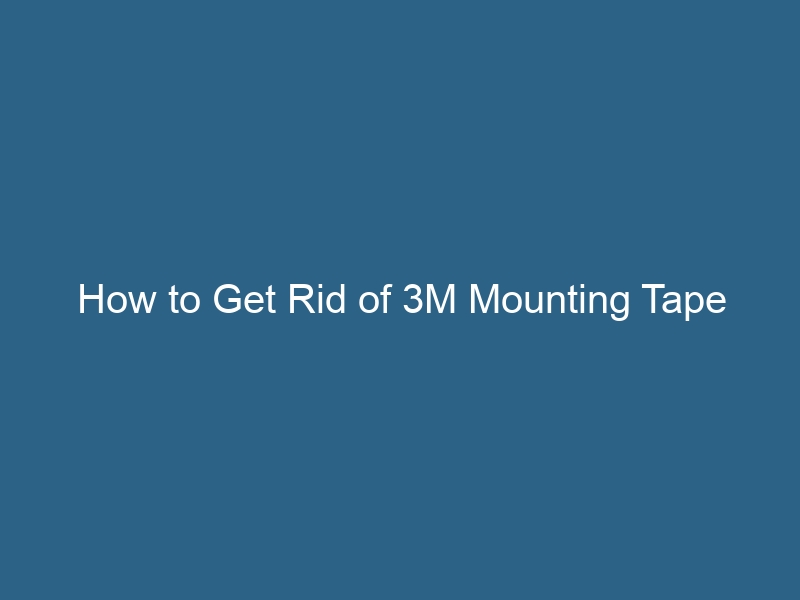Quck answer
Removing 3M Mounting Tape can be done easily with a few simple steps. Start by heating the tape with a hairdryer to soften the adhesive. Then, use a plastic scraper or credit card to gently lift the tape from the surface. If any residue remains, apply a small amount of rubbing alcohol or adhesive remover and wipe it off with a clean cloth. Be careful not to damage the surface while removing the tape. With these steps, you can safely remove 3M Mounting Tape without leaving any traces behind.
Many of the mounting tapes manufactured by 3M are designed to create a permanent connection between a surface and another object. Some of these tapes have a foam-based core made of acrylic, which leaves a small gap between the adhered surfaces. This space becomes advantageous when it comes to removing the adhesive, as a thin string, like dental floss, can be used to cut the bond. For 3M mounting tape without the foam core, gently pulling the bonded items apart often separates them, although some adhesive residue may remain.
The Dental Floss Method
Dental floss is an excellent tool for removing 3M mounting tape that is currently sticking an object onto a flat surface, as well as on some curved surfaces. The key to using dental floss as a bond breaker is being able to maneuver a taut piece of floss between the tape and the bonded surfaces. This makes it quite easy to use on any of 3M’s mounting tapes that have foam cores. If you don’t have dental floss, any durable, narrow thread or string will also work, as will fishing line.
Take a piece of dental floss that is long enough to reach between the stuck items, with enough extra length to wrap around your fingers. For example, if the mounting tape is holding a small picture frame on the wall, cut the floss slightly larger than the frame so that you can manipulate the floss behind it. Hold the floss tightly between your hands and then slide it under the top object that is stuck to the tape. Move the floss back and forth and work your way through, as if you were slicing a piece of cheese. If the tape is on a wall, be prepared for the mounted item to fall; ask a friend to hold up the object if it is fragile, such as a picture frame.
The Peel-and-Pick Technique
Peeling off the tape is effective if you can remove one of the bonded items, like the aforementioned picture frame. Grab one corner of the tape and peel it off as slowly as possible, as the bond of the tape actually becomes stronger if you try to peel it quickly. Remove as much of the tape as possible by peeling; it may take several attempts to remove most of it if the tape breaks.
Once you have peeled off as much as possible, pick at the remaining tape fragments or roll the sticky adhesive residue into a ball and dab it onto the other adhesive bits, as adhesive easily sticks to itself. If the surface still feels sticky, apply a high-quality masking tape over it, smooth the tape down, and let it sit for a minute or so. Peel off the tape and much of the sticky residue should transfer to the sticky side of the tape.
Solvents for Removing Residue
If the surface still feels slightly tacky after removing the tape, a solvent like rubbing alcohol can be used to remove the remaining adhesive residue. Dip a cotton swab or a clean white cloth into the alcohol and then dab and gently rub the sticky surface. For areas such as painted walls, test the alcohol in an inconspicuous area first to ensure that it does not cause any damage.


